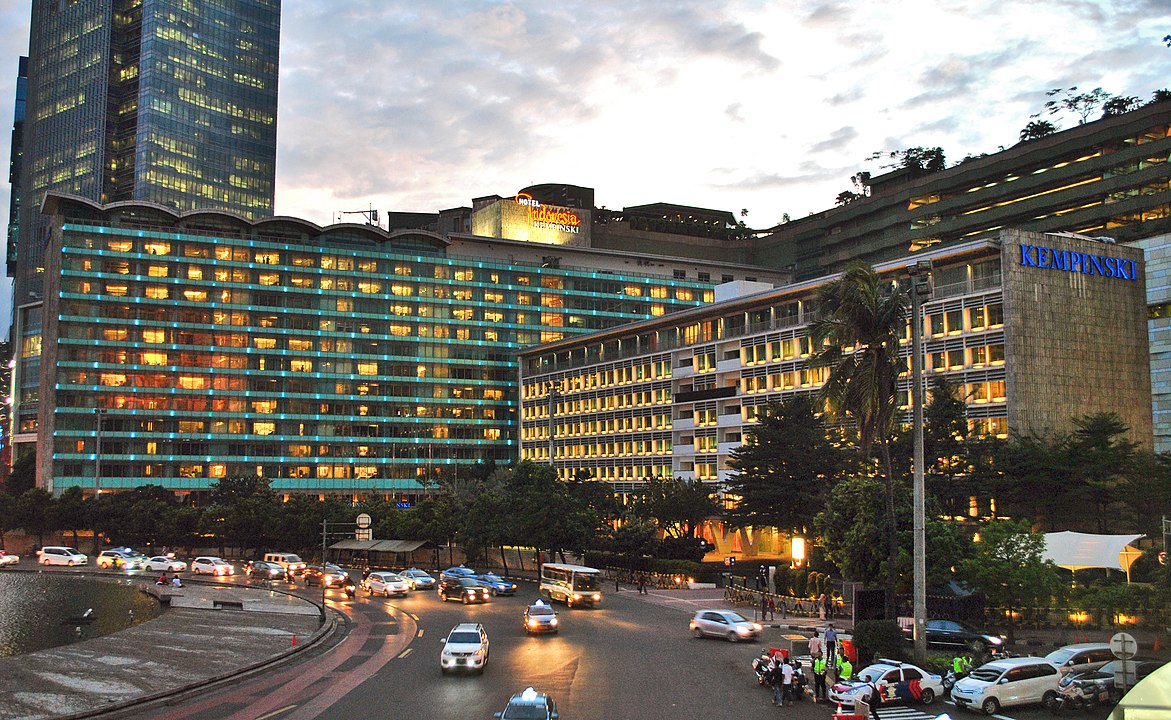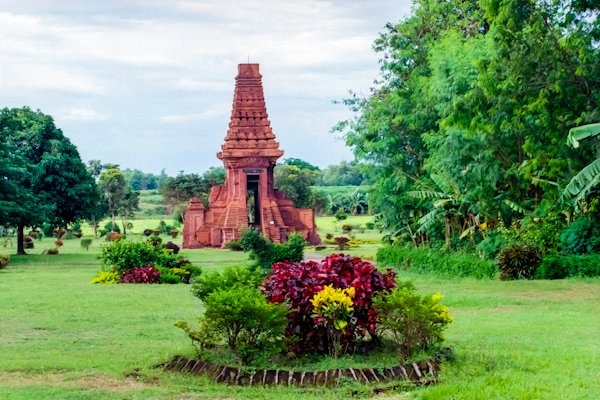For the past 40 years Hotel Indonesia in Central Jakarta has been the capital’s major landmark, and its fame is often linked to the country’s political pride. Built to fill the need for an international standard hotel for the 1962 Asian Games, Hotel Indonesia was the first high-rise hotel in the country. At that time, it had 14 floors and 400 rooms compared to its current 586 rooms.

As a landmark, the hotel’s acronym, HI, was adopted as the name of the roundabout where Jakarta’s main thoroughfares, Jl. Sudirman and Jl. Thamrin, meet.
During the reformasi years, the HI roundabout became a favorite spot for demonstrations against the government and the hotel was the most strategic place for journalists who covered them. HI public relations manager Meriem Roy said the hotel’s balconies facing the roundabout would be filled with cameras and television cameras bearing enormous telephotos to capture the demonstrations below.
But the value of Hotel Indonesia lies beyond the politics or history
for management decision sildenafil citrate alternative to injection therapy. Intraurethral therapy is.
. When visitors tour the hotel complex they are immediately struck by the numerous pieces of artwork decorating the walls. The initiator of the hotel, the late president Sukarno, was a very enthusiastic art patron and the hotel’s interior is filled with artwork depicting Indonesia at its best. “Sukarno was very involved with the hotel’s construction, his concept was to create a little Indonesia in the hotel so that tourists could get a taste of how multicultural the country is,” the chairman of the Indonesian Architecture Association (IAI), Bambang R. Yudawan, said.
The building’s architecture was designed by American architect Abel Sorensen, who followed an international style, which, Bambang said, usually favors purism, minimalism and modernism. “The numerous pieces of artwork and the international style of the building are in contrast with each other, of course, but Sukarno was a very persistent person,” he said, with a grin.
Numerous pieces of artwork by local or international artists adorn the hotel. Outside on the left of the hotel is a three-meter-by-24-meter relief depicting the scenes of Balinese life and was created by Sanggar Selabinangun Yogyakarta between 1961 and 1964. Sukarno had a Balinese mother. “People should be able to enjoy the mural as they come up to the hotel as it was meant for a more open design. The hotel should not be fenced in as it covers the mural,” Bambang said, adding that a fence was required to separate street traffic from the hotel’s expanding parking lot.
Upon entering the lobby — which was a later addition to the hotel — visitors are struck by the three flagpoles, created by noted Balinese sculptor Nyoman Nuarta, flying the national red-and-white flag. “This canopy was built because of the need for a more spacious lobby, but because it wasn’t planned, the canopy ruined the original design and made many of the components redundant,” Bambang said. He said that the management of the state-owned hotel is currently trying to recreate the hotel’s original look and the canopy would need to come down.
Hotel Indonesia was constructed in 1959 with war reparations from Japan. The construction was done by Japan’s Taisei Corporation and most of the building’s material are high quality imported products. “Except for the timber, the other material, such as the stainless steel ceiling in the corridors, were imported from Japan,” Bambang said. In 1961, the hotel was managed by New York-based Inter-Continental Hotel Corporations, and was known as Hotel Indonesia Inter-Continental. It was officially opened on Aug. 5, 1962.
An enormous mosaic of various traditional Indonesian dances created by G. Sidharta can be seen on the upper walls of the hotel’s main restaurant, the Ramayana. Also in the same room is a painting by internationally renowned artist Lee Man Fong depicting the flora and fauna of Indonesia. Numerous statues also cover the hotel’s grounds, including Trubus’ Dewi Sri and Saptoto’s creation of a woman collecting water. More than that, the hotel is also known to have launched the careers of many of Indonesia’s finest artists in the performing arts with Hotel Indonesia Popular Theater, including famed film directors Teguh Karya and N. Riantiarno, actor Slamet Rahardjo and actresses Titi Qadarsih, Toeti Indra Malaon and Dewi Matindas.
Famous musicians and singers were also discovered here. They include Bob Tutupoli, saxophonist Pomo and singer and actress Marini. Choreographers Juni Amir and Sampan Hismanto also found fame after performing at the hotel. “The Ramayana room was also the venue for the first Miss Indonesia competition in 1969,” Debra Yatim, the organizer for HI’s 40th anniversary, said.
For its anniversary this year (2002), Hotel Indonesia will launch a 16-month-long art and cultural program to repeat the work done years before, which makes the hotel one of the country’s cultural centers. Between August and December next year the hotel will be open for cultural shows and workshops, some of which will be organized by Teater Populer, pop culture and youth foundation PopCorner, independent film community Konfiden and IAI.
Etched on a bronze plaque in the lobby are these words:
“Mega-mega yang disentuh pudar karena keagungan kerja, Badai-badai yang ditentang nyisih karena keagungan jiwa. Tiadalah kebahagiaan sebesar jiwa dan semua pengabdian diuntukkan bagi keagungan bangsa, dan semua kelelahan diuntukkan bagi kemuliaan manusia” — Dijiwai dan diprakarsai oleh Presiden Republik Indonesia Pimpinan Besar Revolusi Ir. Soekarno.
(“Clouds that are touched fade through the majesty of work, storms that are faced subside through the majesty of the soul. There is no happiness as great as the soul’s and all devotion is for the greatness of the country, and all exhaustion dedicated to the glory of man.” — Inspired and initiated by the President of the Republic of Indonesia and Great Leader of the Revolution Ir. Soekarno).
Just like its motto lebih dari sekadar hotel, Hotel Indonesia is more than just a hotel.
Update 2012: The hotel has recently completed a major renovation, and is currently managed by Kempinski Group.









